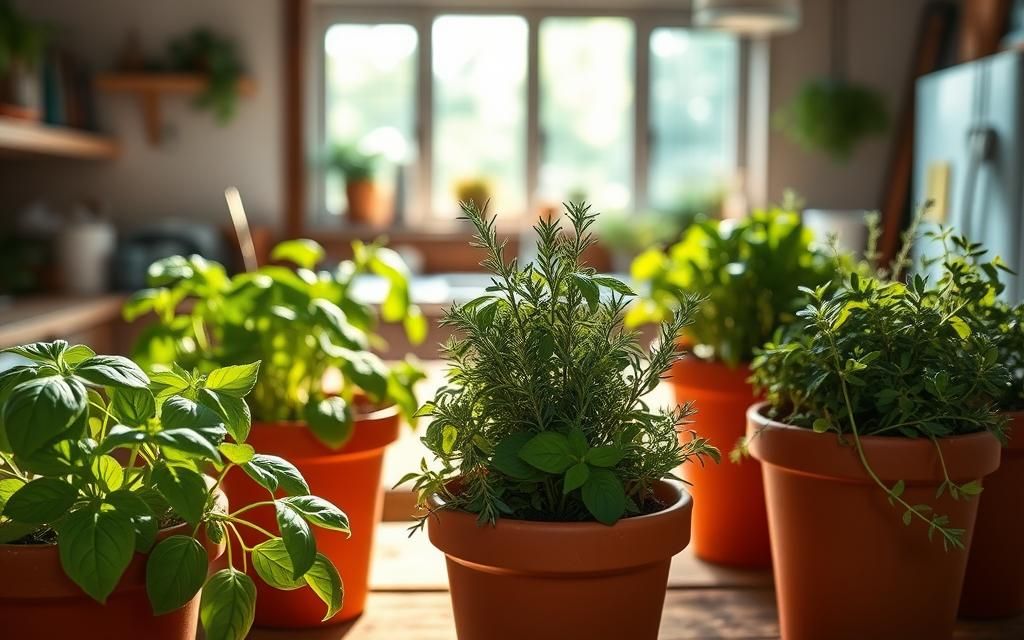Eco Friendly Pest Management: Sustainable Solutions for Your Home. In today’s world, keeping our homes and the environment safe is very important. Some old pest control ways use harmful chemicals. These chemicals can mess up nature’s delicate balance.
Luckily, more people are turning to eco-friendly methods to keep pests away. This is good for both our homes and the earth. We can fight pests and protect the planet by using these methods1.
In this article, we’ll look at ways to keep your home free of pests in a safe, green way. We’ll talk about everything from natural repellents to using friendly bugs for control. These strategies are effective and good for our environment. They will help your home and garden stay healthy2.
Table of Contents
ToggleWhat is Eco Friendly Pest Management?
Eco-friendly pest management focuses on prevention and uses non-toxic, natural ways to handle pests3. Integrated Pest Management (IPM) is a key strategy that mixes different methods to reduce harm to the environment3. In IPM, experts first check for pests, choose steps to stop them, and then use things like natural repellents or traps3.
Integrated Pest Management (IPM)
IPM aims for long-term pest control through various techniques3. It looks at why pests appear, uses physical and biological controls, and turns to chemicals only if nothing else works3. This method prefers using natural, non-harmful options, making it better for nature than usual pest control3.
Natural Repellents
Alongside IPM, natural repellents like peppermint oil, vinegar, and some essential oils can help keep pests away3. These options work well but don’t hurt the environment or health like chemicals do4. Using natural repellents is good for your home or business and shows care for the earth and its people4.
Eco-friendly pest management is about using natural approaches to prevent and control pests3. This way, people and companies can keep pests in check without the bad effects of chemical methods435.
Benefits of Eco Friendly Pest Control
Eco-friendly pest control has many advantages over usual methods. It’s better for the environment and helps guard our homes. It works by using natural ways to keep pests away, lessening the chances of them coming back6.
Its benefit on the earth is huge. Traditional pest control can harm the land, making plants die and not grow back. Eco-friendly ways are safer for good bugs and pets, mainly focusing on the pests we want to get rid of6.
It keeps working for a long time because pests can’t get used to natural repellents6. It’s also cheaper and easier than traditional methods. There’s no need to leave home when they treat it, and you don’t have to do a lot of prep work6.
Integrated Pest Management (IPM) is a big part of eco-friendly pest control. It stops pests but doesn’t cause big risks to us or nature7. IPM uses different ways to control pests, focusing on natural methods like using bugs that eat pests and changing the environment so pests don’t like it7.
Using IPM means the earth’s safer and there are less pests used to treatments. But, there might be more money and waiting involved at first. Still, the good points of going eco-friendly in pest control outweigh the bad. It’s a smart choice for anyone78.
Regular pesticides can really hurt us and the environment. The World Health Organization says they cause a lot of poisonings and deaths every year6. Using these chemicals for a long time can make us and animals sick in many ways8. Using eco-friendly ways means we don’t face these dangers. The earth and living things are safer with these methods8.
Choosing eco methods isn’t just about fighting pests. It’s also about keeping us and nature healthy over time. Plus, it’s good for saving money. Everyone should think about going eco-friendly for a happier, safer home or work place678.
Eco Friendly Pest Management Methods
Choosing eco-friendly ways to handle pests is good for the Earth and our living spaces. We can use things like natural predators and traps to keep bugs at bay. I’ll walk you through these green pest control options.
Biological Pest Control
Using nature to fight bugs means we add helpful bugs or bacteria to the mix. Things like ladybugs to eat aphids or nematodes for underground pests work well9. Many landscaping pros are well-trained in this area, showing it’s a trusted method9.
Physical Barriers and Traps
Keeping bugs out with screens and sweeps is a smart move. Traps, both sticky and light, catch insects before they become a problem10. Bugs that harm lawns, like grubs and chinch bugs, can be controlled this way. It’s all done without poisons.
The9Our Water, Our World (OWOW) program helps people shop for less-toxic pest control products. These are available in stores across Marin, making them easy to find. It’s a simple step toward eco-safe living.
11Choosing eco-pest control also means keeping food and people safe from harmful chemicals11. With these methods, we can keep our environment and families healthier and still beat the bugs.
Using Spices as Pest Repellents
Many common spices we use at home have strong smells that bugs don’t like. This makes them natural ways to keep pests away without hurting the environment12. By mixing spices like cinnamon, cayenne, paprika, cloves, or black pepper, you can make bug-repelling mixes. You won’t need to use chemical sprays12.
To start, mix one teaspoon of your selected spice with a cup of water in a spray bottle12. Spritz this mix in spots where bugs get in, like around windows and doors. It helps keep them outside12. Plant pests such as aphids, whiteflies, and even ants, stay away when you use cloves, chili powder, or cinnamon13.
Using spices for pest control is good in many ways. It saves money, doesn’t harm the planet, and is safe near kids and pets13. Some elements in spices act against insects in many ways. They can kill eggs, young bugs, and stop more bugs from coming. So, spices not only fight pests but also help farming be more natural14.
So, try using spices the next time bugs or unwelcome critters show up. You’ll be using simple, green ways to keep your space bug-free121314.
Food Waste as a Pest Repellent
We, as fans of being eco-friendly, love finding new uses for things. One great option is reusing food waste to keep pests away. It’s both a clever and green way to tackle the problem15.
Citrus Peels
Citrus peels, such as from lemons or oranges, give off a strong smell. Bugs don’t like this smell, so by putting the peels where bugs enter or stay, you keep them out. This method works well against ants and spiders16.
Coffee Grounds
Do you drink coffee? Don’t throw away the grounds yet! Instead, spread them around your garden. The rough texture and smell of the coffee scare off slugs and snails15.
Using food scraps as a bug defense helps the environment. It means less waste, no need for harmful chemicals, and keeps pests at bay. This approach benefits our world and the places we call home17.

Attracting Beneficial Insects
Eco-friendly pest control uses helpful bugs to fight off bad bugs in your area. To attract these good insects, you can plant a variety of flowers and herbs. This helps create a natural balance without the need for chemicals18. For example, ladybugs and lacewings eat pests like aphids and caterpillars, helping your garden naturally18.
Plants that Attract Beneficial Insects
The secret to getting beneficial insects is to have lots of different plants. These plants should give the bugs food, shelter, and a place to lay eggs19. Good plant families for this include Carrot, Aster, Mustard, and Verbena19. Adding these to your yard will bring more ladybugs and lacewings, which will eat your garden’s pests19.
| Annual Plants | Beneficial Insects Attracted | Pests Controlled |
|---|---|---|
| Marigolds | Lacewings, Ladybugs, Parasitic Wasps | Aphids, Caterpillars, Whiteflies |
| Sunflowers | Ladybugs, Lacewings, Hoverflies | Aphids, Mites, Thrips |
| Dill | Lacewings, Parasitic Wasps, Tachinid Flies | Aphids, Caterpillars, Whiteflies |
It’s not just about the plants; insects need water and places to stay, too19. You can help by placing containers with water and pebbles for drinking. And leaving leaf litter around will give them a safe home19.
Using these methods helps keep your garden healthy without chemicals20. It’s part of Integrated Pest Management (IPM). IPM uses nature to control pests, which is good for the environment20.
Bringing in helpful insects is easy and good for your garden. By choosing the right plants, you can naturally control pests. This means a beautiful garden that’s pesticide-free thanks to these great beneficial insects.
Eco Friendly Ant Control
Making your home eco-friendly includes dealing with ant invasions the green way. Argentine ants are often found in homes. Using chemicals to fight them can pollute our water21. Luckily, there are many eco-safe ways to keep ants away without hurting our planet.
Natural repellents are a top choice. Certain essential oils, like peppermint, tea tree, and lemon eucalyptus, keep ants at bay21. Mixing vinegar or lemon juice with water makes a spray that also works. For a stronger option, a mix of boric acid, sugar, and water lures and kills ant colonies21.
Diatomaceous earth is another safe pick. This powder kills ants by drying them out21. Planting certain herbs, such as peppermint, lavender, and catnip, can protect your yard from ants too21.
Choosing natural methods means using less harmful chemicals. It helps our homes and nature be healthier21. But, sometimes, you might need a pro if the ant problem is big or keeps coming back, even if you use green ways21.
| Eco-Friendly Ant Control Methods | Effectiveness |
|---|---|
| Essential Oils (Peppermint, Tea Tree, Lemon Eucalyptus) | High |
| Vinegar and Lemon Juice | Moderate |
| Boric Acid, Sugar, and Water Bait | High |
| Diatomaceous Earth | High |
| Ant-Repelling Plants (Peppermint, Lavender, Rosemary, Catnip) | Moderate |
Using these eco ways, we can control ants and keep our homes and the planet in good shape21. Being proactive and choosing green pest control is crucial for a caring and eco-friendly space.
Safe Disposal of Pesticides
Sometimes, using certain eco-friendly pest control may not be enough, and we need pesticides. Handling the disposal of these leftovers is key. Never pour them where they can flow into water, like sinks, toilets, or outside. This is dangerous for our water systems22. Instead, bring them to proper drop-off sites for safe disposal23. Doing this helps keep our environment cleaner from harmful chemicals.
Colleges like the University of Florida and Washington State University stress how important correct pesticide waste disposal is23. Remember, local laws might be stricter on this matter than national ones. Try using Integrated Pest Management to lessen your pesticide use23. For help on where to get rid of these chemicals, call 1-800-CLEANUP23.
There are clear laws, both federal and state, on disposing of pesticide waste safely22. If you throw them away incorrectly, you might face fines22. These laws say how to handle different kinds of leftover pesticides22.
For hazardous waste, let a professional waste contractor handle it22. Hazardous waste can be flammable, corrosive, unstable, or poisonous22. The amount of waste also determines how it should be managed22.
Keep pesticide waste in good containers, and away from where it can cause harm or pollution. Make sure to clearly label them22. If you’re a business, tell the local Environmental Protection Agency about your waste22. It’s also important to have a plan in case of emergencies and to follow all rules properly22.
If you’re a farmer, you can dispose of some pesticides on your land. But you must be very careful not to pollute the ground water22. The label on the pesticide won’t tell you if it’s dangerous waste. You need to look this up22. Protection of the ground water is especially vital in Florida22.
There are guides and displays to help you learn about safer pest control methods24. You can also call the National Pesticide Information Center at (800) 858-PEST for advice24. In March 2016, a paper was made from 25% used material and 50% new but recycled material24. This paper talked about which pesticide ingredients are bad for water and what signal words mean on their labels24.
Eco Friendly Pest Management for Gardens
Keeping your garden healthy and free of pests is key in eco-friendly pest control. Start by improving the soil with nutrients. Then, plant herbs and flowers that bugs don’t like, and use products such as diatomaceous earth. This method makes the garden unwelcome to harmful insects but friendly to helpful ones25.
Use organic pesticides like neem oil, garlic, or chili pepper to keep the bugs away without hurting the good bugs or the environment25. Many pest control companies now offer green options to help keep the planet safe25.
- Garlic and water mix can scare off aphids and soft insects well25.
- Physical barriers stop bugs from getting to your plants. Use row covers, netting, and diatomaceous earth25.
- Changing the location of your crops can break the bug’s life cycles and cut down on plant diseases25.
- Choosing plants that fight off diseases and spreading them out can keep bad bugs away25.
- Good care, like watering and feeding your plants right, makes them stronger against pests and diseases25.
For more direct bug fighting, try soap spray and neem oil26. Mix a little dish soap with water, and spray it on bugs like aphids, thrips, mites, and whiteflies. Early morning or evening is best26. Neem oil works against thrips, leafminers, aphids, and more. Remember to dilute and apply it correctly. Don’t use it on flowers when bees are around26.
A modern way to keep bugs off is the JADAM system from Korea. It focuses on good soil and uses natural sprays that are safe for the environment. This system doesn’t cost much and helps you be more self-sufficient in fighting pests. It has succeeded in growing 60 different crops within a year26.
IPM is about keeping a natural balance to manage pests26. It uses pesticides only if other methods fail. This way, it protects our plants and the environment26.
Choosing green pest control is better than using regular pesticides that can harm everything for a long time27. These chemicals can hurt bees, birds, and even humans, causing health issues. By picking eco-friendly options, we safeguard our loved ones and our surroundings while helping our gardens stay healthy27.
Conclusion
Eco-friendly pest management is a solid way to keep pests at bay. It uses methods like Integrated Pest Management2829 and natural repellents28. This approach helps us control pests without harming the environment30. We also use items we already have and welcome helpful insects for better pest control2829.
Moving towards green pest control is key for a better world. It makes our homes and surroundings safer2930. By showing the positive outcomes of eco-friendly methods, we’re helping everyone choose better. This protects our homes and the environment too.
At first, switching to these methods might seem like work. But, it’s for the best in the long run for us and our planet30. Making this choice helps us live in harmony with nature. It’s a step towards a future where we can all thrive.
Source Links
- https://www.plantharmony.org/blogfeed/eco-friendly-pest-management
- https://www.palmettoexterminators.net/pest-news/eco-friendly-pest-control-methods
- https://www.ecoguardpestmanagement.com/eco-friendly
- https://www.greenpestsolutions.com/blog/green-pest-management-eco-friendly-pest-control
- https://gumtreetraps.com/the-benefits-of-eco-friendly-pest-control/
- https://tru.earth/blogs/tru-living/importance-of-eco-friendly-pest-control
- https://ridabuginc.com/blog/pros-and-cons-of-eco-friendly-pest-control-and-integrated-pest-management
- https://www.ecoguardpestmanagement.com/pest-resources/benefits-of-eco-friendly-pest-control
- https://mcstoppp.org/2020/03/eco-friendly-pest-control/
- https://www.begreen.pro/blog/eco-friendly-pest-management-protecting-your-lawn-naturally
- https://www.orkin.com/commercial/articles/going-green
- https://www.hippo.com/blog/eco-friendly-pest-control
- https://www.homesandgardens.com/gardens/spices-to-deter-common-garden-pests
- https://www.entomoljournal.com/archives/2019/vol7issue2/PartL/7-1-69-627.pdf
- https://facilitiesmanagementadvisor.blr.com/grounds-management/eco-friendly-pest-control-for-landscaping/
- https://www.bugoutwf.com/blog/eco-friendly-pest-management-strategies
- https://www.romexpest.com/eco-friendly-pest-control-good-for-you-and-the-environment/
- https://piedmontmastergardeners.org/article/natural-pest-control-attracting-beneficial-insects/
- https://extension.psu.edu/attracting-beneficial-insects
- https://hgic.clemson.edu/attracting-beneficial-insects/
- https://www.pestcontroldirect.co.uk/natural-ant-control-eco-friendly-approaches-to-manage-ant-infestations/
- https://edis.ifas.ufl.edu/publication/PI010
- http://npic.orst.edu/health/disposal.html
- https://www.centralsan.org/sites/main/files/file-attachments/safe_use_and_disposal_of_pesticides.pdf?1511470766
- https://www.unifiedhomeremodeling.com/6-effective-strategies-for-managing-garden-pests/
- https://www.ecofriendlyhomestead.com/sustainable-garden/learn/pest-management-an-overview-of-eco-friendly-gardening-options
- https://michaelcarrrealty.com/eco-friendly-pest-management/
- https://www.linkedin.com/pulse/eco-friendly-pest-control-sustainable-solution-te3ic?trk=public_post_main-feed-card_reshare_feed-article-content
- https://ecoclearproducts.com/blogs/news/eco-friendly-pest-control-why-it-matters-for-your-home-and-the-environment
- https://gumtreetraps.com/eco-friendly-pest-control-solutions-for-farming-success/














